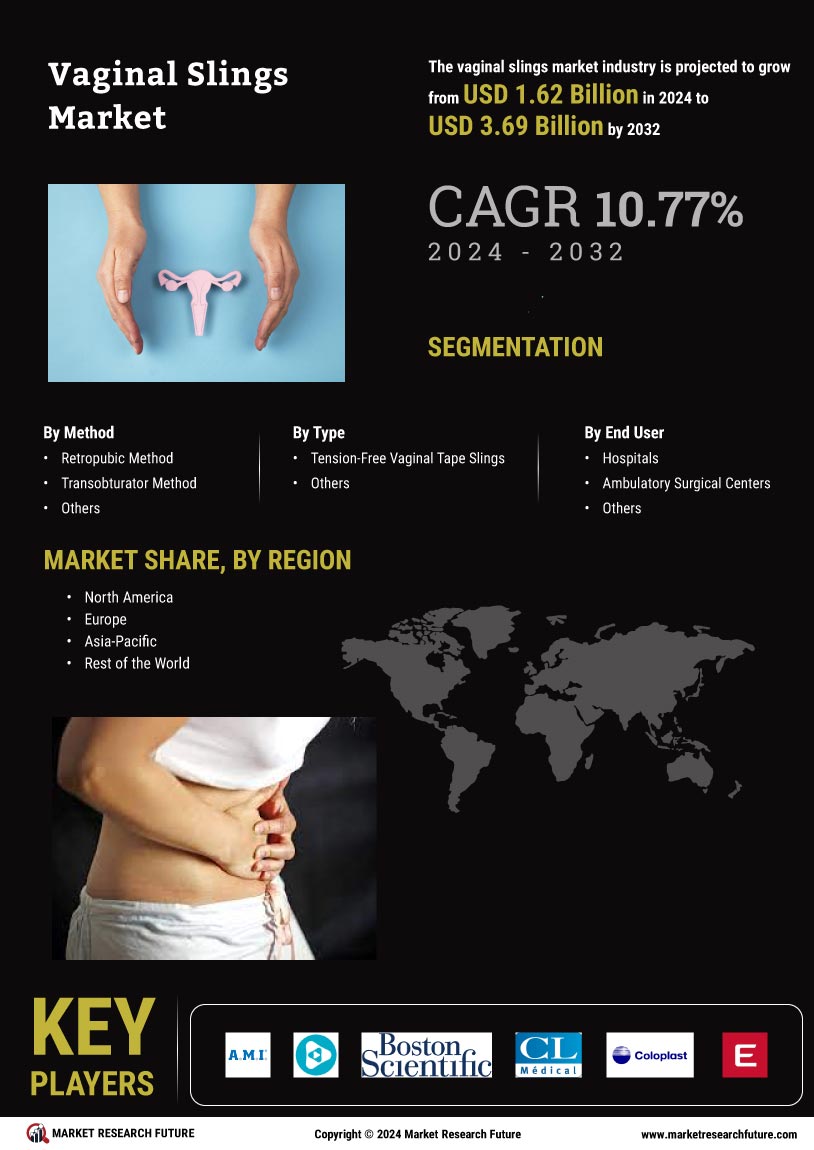Innovations in Surgical Techniques
Innovations in surgical techniques and materials used in the Vaginal Slings Market are transforming treatment options for pelvic floor disorders. The introduction of minimally invasive procedures has enhanced patient outcomes, reducing recovery times and complications associated with traditional surgeries. For instance, the use of robotic-assisted surgeries and advanced mesh materials has shown promising results in terms of efficacy and safety. As these techniques gain acceptance among healthcare professionals, the demand for vaginal slings is expected to rise. Moreover, ongoing research and development efforts aimed at improving sling designs and materials may further stimulate market growth. The Vaginal Slings Market is thus likely to witness a surge in adoption as these innovations become more widely available.
Rising Incidence of Pelvic Floor Disorders
The increasing prevalence of pelvic floor disorders, such as stress urinary incontinence and pelvic organ prolapse, is a notable driver for the Vaginal Slings Market. Studies indicate that approximately 25 to 45% of women experience some form of pelvic floor disorder during their lifetime. This growing incidence necessitates effective treatment options, thereby propelling the demand for vaginal slings. As healthcare providers seek to address these conditions, the market for vaginal slings is likely to expand. Furthermore, the rising awareness among women regarding these disorders and their treatment options contributes to the market's growth. The Vaginal Slings Market is thus positioned to benefit from this trend, as more women seek surgical interventions to improve their quality of life.
Increased Focus on Quality of Life Improvements
There is an increasing focus on quality of life improvements among women suffering from pelvic floor disorders, which serves as a key driver for the Vaginal Slings Market. Women are becoming more proactive in seeking solutions that enhance their daily lives and overall well-being. This shift in mindset is leading to a greater acceptance of surgical options, including vaginal slings, as viable treatments. The emphasis on quality of life is further supported by healthcare providers who advocate for effective interventions that can alleviate symptoms and restore normal function. As more women prioritize their health and seek out treatment options, the Vaginal Slings Market is likely to experience a surge in demand, reflecting this growing trend.
Aging Population and Increased Healthcare Access
The aging population is a critical factor influencing the Vaginal Slings Market. As women age, the likelihood of developing pelvic floor disorders increases, leading to a higher demand for effective treatment options. The demographic shift towards an older population is evident, with projections indicating that by 2030, nearly 20% of the population will be over 65 years old. This trend is accompanied by improved access to healthcare services, allowing more women to seek treatment for pelvic floor disorders. Consequently, the Vaginal Slings Market is poised for growth as healthcare systems adapt to meet the needs of this demographic. The combination of an aging population and enhanced healthcare access is likely to drive the demand for vaginal slings.
Growing Investment in Women's Health Initiatives
The growing investment in women's health initiatives is a significant driver for the Vaginal Slings Market. Governments and private organizations are increasingly recognizing the importance of addressing women's health issues, leading to enhanced funding for research and awareness campaigns. This focus on women's health is likely to result in improved access to treatment options, including vaginal slings. Additionally, educational programs aimed at informing women about pelvic floor disorders and available treatments are becoming more prevalent. As awareness increases, more women may seek surgical interventions, thereby driving demand in the Vaginal Slings Market. The commitment to improving women's health outcomes is expected to create a favorable environment for market growth.


















Leave a Comment